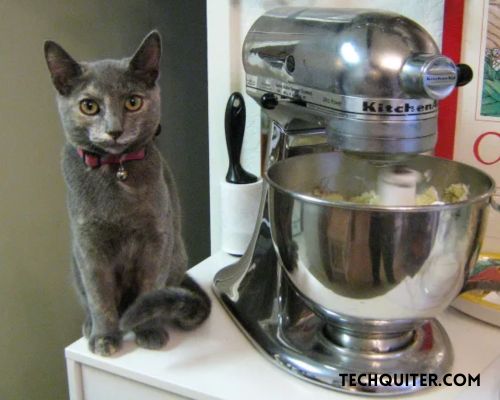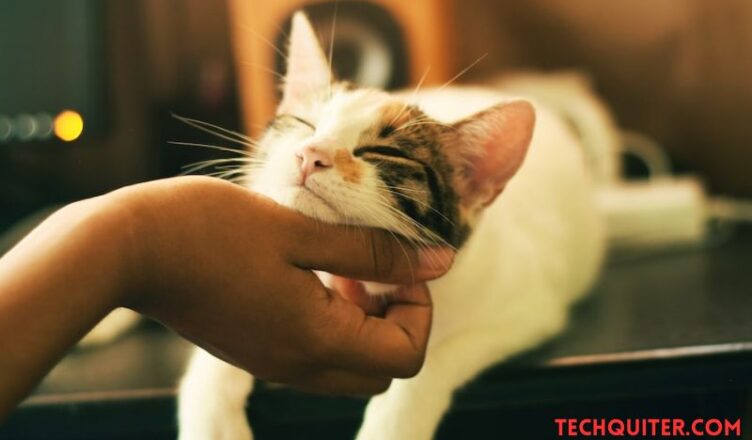Introduction: The Shocking Story of the Cat in Blender
The Cat in Blender urban legend is a shocking and disturbing story that has circulated for years, causing outrage and disbelief among those who hear it. The story goes that a person, often portrayed as a sadistic individual, puts a live cat into a blender and turns it on. The graphic nature of this tale has led to widespread condemnation and calls for justice. However, what many people fail to realize is that the Cat in Blender story is nothing more than an urban legend, a fictional tale designed to shock and disturb.
The impact of the Cat in Blender story on society cannot be underestimated. It has caused outrage and anger among animal lovers and has led to a heightened awareness of animal cruelty. The graphic nature of the story has also sparked debates about the limits of free speech and the responsibility of individuals to verify information before sharing it. In an age where misinformation spreads like wildfire, it is important to critically evaluate stories like The Cat in Blender and separate fact from fiction.

The Origins of the Cat in Blender Urban Legend
The Cat in Blender story has evolved over time, with various versions circulating in different communities. Some versions claim that the person who puts the Cat in Blender is a deranged individual seeking pleasure from inflicting pain on animals. Others suggest that it is a prank gone wrong, with someone accidentally turning on the blender while the cat is inside. Regardless of the version, one thing remains consistent: the shocking nature of the story.
The origins of the Cat in Blender myth are unclear, but it is believed to have originated in the late 20th century. Some speculate that it may have been inspired by real cases of animal cruelty, while others believe it was created to shock and disturb. Regardless of its origins, the story quickly gained traction and spread through word of mouth and later through social media.
The Psychological Impact of the Cat in Blender Story on Society
The Cat in Blender story elicits strong emotional responses from individuals who hear it. It taps into our innate empathy for animals and triggers feelings of anger, sadness, and disgust. This emotional response is understandable, as animal cruelty is a serious issue that should not be taken lightly. However, the graphic nature of the story can also have unintended consequences.
Spreading such a disturbing myth can cause unnecessary fear and anxiety among animal lovers. It can also perpetuate negative stereotypes about certain individuals or groups, leading to prejudice and discrimination. Additionally, the shock value of the story can desensitize people to real cases of animal cruelty, as they may become numb to the horrors they hear about.
The Role of Social Media in Spreading the Cat in Blender Myth
Social media has played a significant role in the spread of the Cat in Blender myth. With platforms like Facebook, Twitter, and Instagram, information can be shared instantly and reach a wide audience within seconds. Unfortunately, this also means that misinformation can spread just as quickly.
The Cat in Blender story has been shared countless times on social media, often accompanied by outraged comments and calls for justice. The graphic nature of the story makes it highly shareable, as people feel compelled to spread awareness about animal cruelty. However, this well-intentioned sharing can have unintended consequences.
Viral stories like The Cat in Blender often lack proper verification and fact-checking. People are quick to share shocking stories without taking the time to verify their accuracy. This leads to a cycle of misinformation, where false stories are perpetuated and believed to be true. To combat this, it is important for individuals to be responsible consumers of information and to fact-check before sharing.
The Legal Consequences of Spreading False Information about Animal Cruelty
Spreading false information about animal cruelty can have serious legal consequences. In many jurisdictions, it is a crime to spread false information that causes harm to individuals or animals. This includes spreading false stories about animal abuse or neglect.
Individuals who perpetuate the Cat in Blender myth can face legal action, including fines and imprisonment. Additionally, they may be held liable for any harm caused as a result of their actions. It is important for individuals to understand the potential legal consequences of spreading false information and to think twice before sharing such stories.
Debunking the Cat in Blender Myth: Separating Fact from Fiction
Despite its widespread circulation, the Cat in Blender story is a myth. There is no evidence to suggest that such an incident has ever occurred. In fact, it is highly unlikely that anyone would be able to put a live cat into a blender without causing serious harm or death.
The importance of fact-checking and critical thinking cannot be overstated. In an age where misinformation spreads like wildfire, it is crucial for individuals to verify information before sharing it. This includes stories like The Cat in Blender, which may seem shocking and believable at first glance but are ultimately nothing more than urban legends.
The Importance of Fact-Checking and Critical Thinking in the Age of Fake News
The Cat in Blender myth serves as a reminder of the importance of fact-checking and critical thinking in the age of fake news. With the rise of social media and the ease with which information can be shared, it is more important than ever for individuals to be critical consumers of information.
Fact-checking involves verifying the accuracy of information before sharing it. This can be done by conducting a quick internet search or consulting reputable sources. Critical thinking involves questioning the validity of information and considering alternative perspectives.
By fact-checking and engaging in critical thinking, individuals can help combat the spread of misinformation and ensure that accurate information is shared. This is particularly important when it comes to sensitive topics like animal cruelty, where false information can cause unnecessary harm and perpetuate negative stereotypes.
The Real Dangers of Animal Abuse and Neglect in Our Communities
While the Cat in Blender story may be a myth, the real dangers of animal abuse and neglect cannot be ignored. Animal cruelty is a serious issue that affects countless animals every year. From neglect and abandonment to physical abuse and torture, animals suffer at the hands of humans in ways that are truly heartbreaking.
It is estimated that millions of animals are abused or neglected each year in the United States alone. These animals often suffer in silence, unable to speak up for themselves or seek help. It is our responsibility as a society to protect these vulnerable creatures and ensure that they are treated with kindness and compassion.
The Need for Education and Awareness to Prevent Animal Cruelty
Education and awareness are key to preventing animal cruelty. By educating ourselves and others about the signs of abuse and neglect, we can better identify and report cases of animal cruelty. Additionally, by raising awareness about the importance of responsible pet ownership and the consequences of animal cruelty, we can help prevent future incidents.
There are many organizations dedicated to animal welfare that provide resources and support for individuals who want to get involved. These organizations offer educational materials, volunteer opportunities, and advocacy campaigns aimed at raising awareness about animal cruelty and promoting responsible pet ownership.
Conclusion:
The Cat in Blender story is a cautionary tale about the power of myth and misinformation. It highlights the need for responsible sharing and critical thinking in an age where misinformation spreads like wildfire.
While the Cat in Blender story may be shocking and disturbing, it is important to remember that it is nothing more than an urban legend. Spreading false information about animal cruelty can have serious consequences, both legally and emotionally. By fact-checking and engaging in critical thinking, we can help combat the spread of misinformation and ensure that accurate information is shared.
In conclusion, the Cat in Blender story is a reminder of the importance of responsible sharing and critical thinking. It is also a reminder of the real dangers of animal abuse and neglect in our communities. By educating ourselves and others, raising awareness, and taking action to prevent animal cruelty, we can make a difference in the lives of countless animals.
